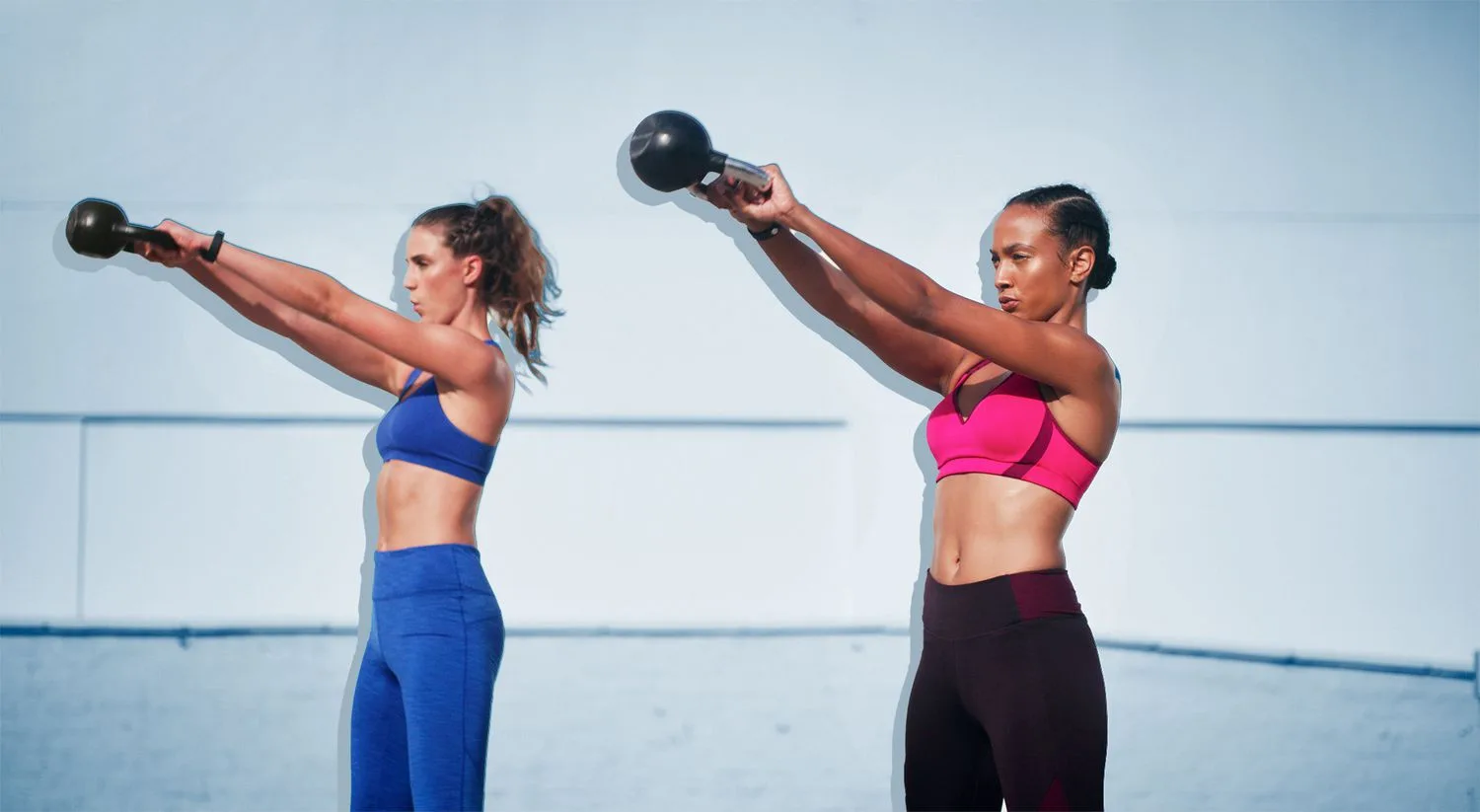Exercise and working out are critical parts of maintaining good health and wellbeing. However, the fitness world is rife with misinformation that can derail even the most motivated individual’s progress. Understanding the truth behind common exercise myths is crucial for mapping out an effective fitness journey. This blog post will tackle the top 10 most prevalent workout falsehoods – debunking these myths is the first step towards fitness success.

Myth 1: “Cardio is the Best Way to Lose Weight”
Cardiovascular exercise like running, biking, or swimming is excellent for heart health. However, it’s a common misconception that cardio alone is the golden ticket for weight loss. The truth is that while cardio burns calories during the activity, it has little afterburn effect. Your body quickly recovers from aerobic workouts, not continuing to torch calories long after you’ve finished your jog around the block.
On the other hand, weight training causes microtears in the muscle fibers, requiring significant extra energy to repair. This means your metabolism gets elevated for hours after strength training – you become a fat-burning machine! Multiple research studies confirm that resistance training is superior for body composition changes and losing body fat. Incorporating 2-3 days per week of lifting into your routine can work wonders for trimming down. Don’t be afraid to grab those dumbbells – combining strength and cardio training is the ultimate combo for success.
Myth 2: “Spot Reduction Works”
So you want tighter obliques or a slimmer thigh gap? Spot reduction is the belief that you can lose fat through targeted muscle exercises in specific areas of the body. This strategy is very appealing – who wouldn’t want the ability to pick and choose where to trim down? However, spot reduction is nothing more than a fad diet myth. Fat loss occurs across the entire body, not just in isolated areas that you work out. You simply cannot crunch your way to a six-pack!
Effective fat loss requires a coordinated full-body approach through exercises like HIIT workouts. Simultaneously, overall calorie intake needs to be controlled to create a moderate daily deficit. There are great targeted exercises to build specific muscle groups, but losing fat requires a comprehensive program. Be skeptical of any spot reduction claims – achieving a lean physique takes commitment to an exercise and nutrition plan that transforms your whole body.
Myth 3: “You Need to Exercise for Hours Each Day”
With our overstuffed schedules, fitting in long workouts every day can seem next to impossible. Between work, family, and other commitments, struggling to squeeze in 2-hour intense training sessions may feel entirely out of reach. Yet many assume that massive quantities of exercise are essential for reaching fitness goals. In reality, less can often be more when designing an efficient workout routine. Research clearly proves the effectiveness of short-duration, high-intensity strength routines for fat loss. Less than an hour a day of properly structured exercise can transform your body composition.
High Intensity Interval Training (HIIT) packs substantial calorie burn into brief 4-minute blocks, alternating between intense bursts and easier recovery. These quick metabolic conditioning workouts maximize Excess Post-exercise Oxygen Consumption (EPOC), elevating metabolism for hours afterward. Additionally, research confirms lifting weights for as little as 20-40 minutes triggers significant fat and weight loss. Pay attention to workout quality over quantity. Structure regimens emphasizing compound lifts, full-body movements, and minimal rest periods between sets for maximum efficiency. Ditch the long cardio sessions – effective body reshaping is possible in 30 minutes a day or less.

Myth 4: “Lifting Weights Will Make Women Bulky”
For generations, the image of the meathead bodybuilder has warded women away from the weight room. Tales circulate of women who wake up one day full-on Schwarzenegger after a few bicep curls. These scare stories origin from distortions about differences in male and female biology. Due to potent hormones like testosterone, building bulky mass comes far easier to men. In contrast, women possess a fraction of the testosterone – even female bodybuilders still appear significantly smaller than male counterparts.
In reality, developing a bulky, overly muscular build via lifting is quite challenging for most women. Resistance exercise offers tremendous benefits for the female physique, including increased bone density and elevated metabolism. Properly structured strength training reshapes a woman’s body into a toned, lean figure. Combining heavy compound lifts like squats and presses with strategic isolation moves leads to that coveted fitness model appearance. Women who lift weights end up trim and defying gender stereotypes. Gone are the days when cardio was king – pumping iron is the new essential ingredient for today’s strong, empowered woman.
Myth 5: “You Can’t Exercise if You’re Overweight”
From gym intimidation to injuries, excuses abound for why heavy folks shouldn’t workout. Many believe that without first losing weight through strict dieting, exercise is off-limits for plus-size individuals. However, avoiding physical activity fails to address the root of the obesity problem – in fact staying sedentary often worsens issues. Exercise provides remarkable benefits for both mental and physiological health, no matter your current weight. While high-impact activities may prove overly stressful for obese joints, plenty of equipment-free options like walking, swimming, or chair yoga offer low barrier to entry.
Additionally, research indicates that just being physically active without even changing diet leads to better body composition. Combining workouts with healthier eating habits multiplies positive impacts. Those new to fitness should focus on consistency first before worrying about advanced programming or high intensities. Start where you’re at currently – even 10 minutes daily of gentle movement makes a measurable difference over time. Obese folks can absolutely workout successfully – judgements about weight limitations are baseless excuses. Take control of your health, not the other way around!

Myth 6: “No Pain, No Gain”
This old adage seems intuitively true – after an intense training session that leaves you sore for days, the logical assumption is that growth and progress directly correlates to discomfort. Yet exercisers should view post-workout pain as a warning sign rather than badge of honor. Differentiating between muscle soreness supercompensation and injury often proves challenging. Attempting to push through sharp joint or tendon pain frequently causes harm, requiring lengthy recovery periods setbacks fitness goals for weeks.
Understanding your body’s pain signals is essential – inflammation indicates a need to temporarily pull back and address nagging issues. Lifting should produce muscle burn during sets and delayed onset muscle soreness (DOMS) peaking 24-48 afterward before fading. Push discomfort levels up to about a 7/10 for maximum adaptive response and strength gains. But sharp pain exceeding this threshold towards injury requires an immediate decrease in loading variables like weight, reps or speed. Some muscle and joint aching is normal, but debilitating throbbing means it’s time to take a break. Productive training works closely with your body – ignoring serious warning signs can cause long-term damage.
Myth 7: “You Can’t Build Muscle After 40”
Starting around midlife, hormonal changes coupled with increased inactivity supposedly make building strength and power impossible. After turning 40, frustrated gym-goers assume each birthday brings inevitable muscle deterioration and fat gain. Yet emerging research reveals maintaining and even growing lean mass well into your golden years is quite achievable. While an undeniable decline in basal metabolic rate and testosterone production occurs, adjustments to workout programming and nutrition can overcome age barriers.
Consistently stressing muscles with progressive overload through weight training provides the necessary stimulus to add mass regardless of age. Consuming adequate protein – upwards of .5g per pound of body weight daily – gives the raw materials to repair microtears and synthesize new muscle. Allowing proper recovery prevents overtraining and burnout. Following these fundamental principles leads to substantial gains over time. Additionally, mature adults may consider hormone optimization therapy under medical supervision for regaining peak hormonal levels when lifestyle measures prove insufficient. Make building muscle over 40 a defiant goal through smart programming and exceptional nutrition. With the right expertise and consistency, fight aging and keep making gains.
Myth 8: Stretching Prevents Injury
Flexibility training undoubtedly offers benefits towards physical performance, including improving range of motion and reducing muscle soreness. Yet the commonly espoused idea that stretching prevents workout injuries lacks clear evidentiary support. Research on pre-exercise static stretching reveals notable decreases power production and speed – hampering strength output seems counterproductive towards injury prevention. Dynamic warmups mobilizing joints through controlled movements appear superior for preparing the body for exercise. Cooling down with light cardio and static extensions feels restorative but plays limited direct role in injury prevention.
Proper exercise form, managing workout volume and intensity, sufficient rest between training sessions all prove more essential for keeping healthy long-term. Ensuring proper mobility and strength in muscle groups surrounding major joints provides the necessary physical resilience when participating in taxing sports. Stretching certainly feels satisfying after challenging training sessions, along with facilitating more fluid body mechanics. However, considering stretching the primary protection against devastating ligament tears or fraying tendons oversimplifies how injuries occur and healing processes function within human anatomy. Holistic lifestyle factors like sleep, nutrition and stress levels arguably contribute more significantly. For direct protection against getting hurt while working out or playing sports, emphasize fundamentals like proper warmup/cooldown, incremental loading parameters, and balancing workout stresses through periodization.
Myth 9: “You Need Supplements to Get Fit”
Grocery store shelves overflow with powders, pills and potions promising rapid fitness transformation. With so many options claiming crucial nutritional support towards your goals, supplements may appear absolutely essential. However, the reality is a balanced whole foods diet sufficiently provides all necessary vitamins, minerals and nutrients for prime health. Outside athletes at competitive levels or those recovering from injury, most healthy individuals already consume adequate micronutrients through eating vegetables, fruits, whole grains, nuts, seeds and lean proteins.
In fact, research indicates excessive supplementation often converts beneficial nutrients into harmful compounds. Further potential pitfalls include digestive issues, unsafe responses when combined with prescription medications, along with product quality control concerns. Perhaps most importantly, relying heavily on supplements fosters nutritional ignorance – you miss learning how to eat right. Achieving truly sustainable fitness success requires fundamentally developing wise dietary habits, not dependency upon pills.
Supplements serve best as exactly that – supplementary enhancement on top of smart foundation. Limit intake to only essentials like protein powder or basic multivitamins while focusing primarily on real food-based nutrition. Foster eating competency through meal prepping healthy dishes and learning macros/micro balances. Getting fit fast means avoiding quick-fix products – long-term results come from lifestyle and behavior changes towards wellness.

Myth 10: “You Can Out-Exercise a Bad Diet”
After crushing a massive workout, ever reward yourself with an extra trip through the fast-food drive-thru? The appeal of out-eating poor nutrition choices sounds reasonable – just put in extra mileage running or spend more time lifting to compensate for dietary indulgences. However, this belief completely disconnects exercise from the reality of human digestion and metabolism. Achieving fitness goals requires approaching wellness holistically across all lifestyle factors instead of compartmentalizing individual aspects. Out-exercising bad diet proves impossible due to the sheer gap in caloric burn rates against consumption.
For illustration, a strenuous one hour lifting session may expend around 500 calories. Yet a single fast food meal often exceeds triple that amount – evening out that equation requires near marathon levels of exercise habitually. Additionally, heavily processed foods contain high levels of sodium, unsatisfying fats and chemical additives creating cravings for more junk calories shortly after eating. Further, making poor nutrition choices sabotages muscle protein synthesis, hindering strength and endurance adaptations. Start viewing food as the fuel that powers your active lifestyle. Developing sustainable long-term habits requires balancing the calories in and out through both smart eating and strategic exercise. Out-exercising bad diet embodies wishful thinking – get fit faster by eating clean.
Wrapping up
This blog tackled 10 prevalent myths sabotaging even highly motivated individuals on their journeys towards fitness. Debunking misinformation marks the first step towards progress. Now armed with the truth, getting active becomes far less intimidating and more effective. Build your customized workout plan and nutrition strategy based on evidence-based facts catered to your unique goals. Patience and commitment stand paramount – sustainable results come through balanced healthy lifestyle habits. Defy conventions, exceed limitations, conquer excuses. Recent breakthroughs in exercise science reveal that getting fit and staying strong well into old age lies easily within reach for anyone willing to embrace proven principles. Put these foundational practices into action by signing up for the newsletter below for tips on incredible recipes, home workout ideas, and transformational mindset coaching direct to your inbox. The future of fitness starts today by feeding your body and soul with truth – now go grab life by the barbell!
Thank you for reading this post, don't forget to subscribe to our free newsletter
!
